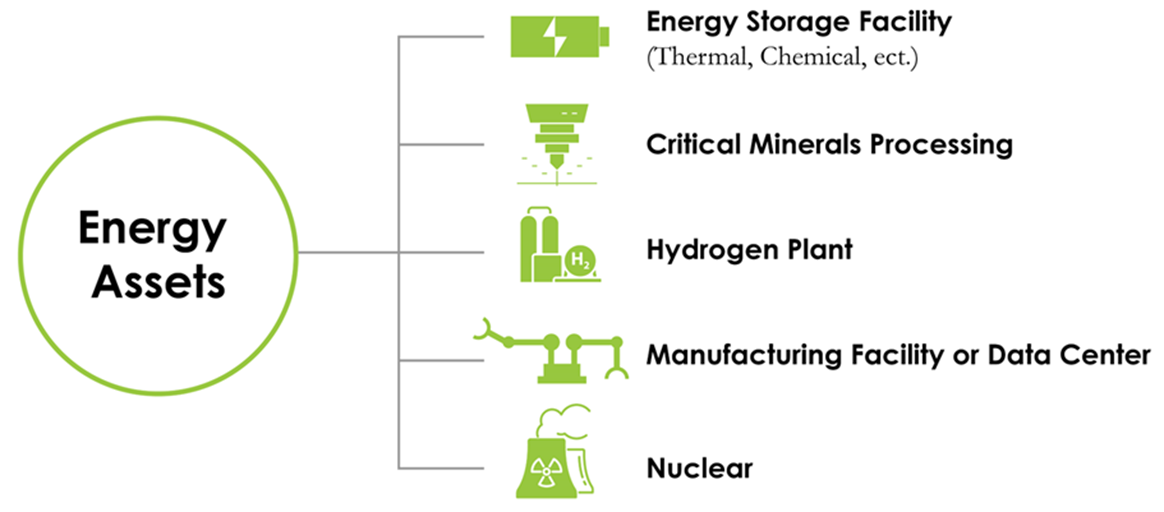Energy Asset Transformation
The mission of the Energy Asset Transformation Program is to leverage and transform energy assets into high-value energy assets such as energy storage facilities, renewable or hybrid facilities, hydrogen plants, clean manufacturing facilities, and community spaces. These efforts represent some of the most promising opportunities to unite private sector and energy community interests in places where employment and opportunity is on the decline. Transformations such as these will require technological advancements, as well as careful integration of workforce, environmental, and safety considerations.

Energy assets can be transformed into high-value opportunities ranging from energy storage sites, industrial and manufacturing facilities, power generation sources, to spaces to support and bolster communities. These energy asset sites may offer access to a skilled workforce with knowledge of industrial operations, community relationships, access to transportation (rail lines, ports, waterways, highways), transmission and distribution infrastructure, electrical interconnect equipment and direct grid connections, and potentially existing site and permitting licenses, among other assets.
As innovative energy and manufacturing companies fan out across the country, it increasingly makes sense for the companies to choose locations in existing energy communities. For energy communities, transforming energy assets can provide a variety of both short-term and permanent family-wage jobs, opportunities for worker retraining programs, access to local work that does not require relocation, and opportunities to work in cutting-edge technology sectors. Importantly, transforming energy assets allows communities to become active participants. As many of these communities maintain a workforce that has knowledge of the industrial operations and community relationships that will be paramount to utilizing these assets.
The Energy Asset Transformation Program is conducting targeted experimental studies to advance high-impact, energy technologies, including energy storage, and is developing case studies of energy assets across the United States that are being transformed. The program will fund concept development followed by pre-front-end engineering design (pre-FEED) studies if the assets can economically be transformed to use or store other sources of energy, such as solar, geothermal, wind, and nuclear sources, or if the existing energy asset can be repurposed. The case studies and the pre-FEED work will provide information to help achieve energy goals and in support of local communities.
Near-Term Focus Areas
Environmental Performance – The program seeks to promote improvements in the environmental performance of energy assets.
Asset Flexibility – The program will determine how, when and where to best transform or utilize energy assets to support grid stability and flexibility.
Energy Storage and Grid Reliability – The power grid must remain resilient and reliable. Methods of providing such reliability, such as with energy storage are being evaluated.
Community Building – The program aims to develop and implement solutions, for example, through direct employment during and after energy assets are transformed, that ensure that communities have a prosperous path forward.
NETL implements this effort as part of DOE’s Office of Fossil Energy and Carbon Management



